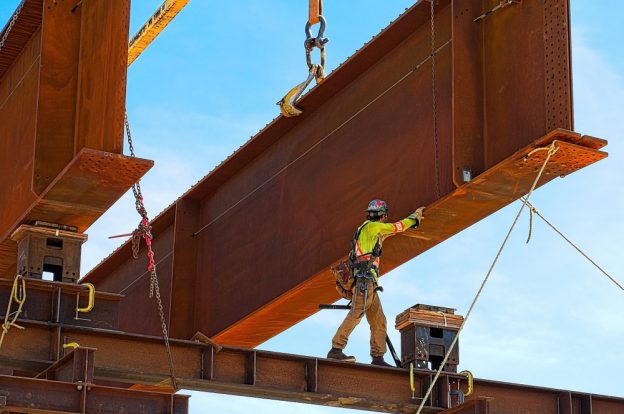In these uncertain times, when the job market is constantly changing, we do what we can to take control of our lives. Maybe you’re looking for a career change. Maybe you’re finishing up school and making decisions about what to do next.
No matter what season of life you find yourself in currently, you can look around and be certain that the construction business is strong and consistent in California.
If your career ambitions have begun to steer you toward becoming a contractor, you’re probably thinking, what does it take to get a Class B General Building Contractor License? This article can serve as an easy jumping-off point so that you can decide for yourself if taking this next big step is right for you.
Basic Requirements
Before getting too deep in the weeds about general contractor life, let’s make sure all the basics are covered. Here’s the absolute essential requirements put forth by the CSLB.
- You must be at least 18 years old.
- You must be legally allowed to work in the United States.
- You must have a minimum of 4 years of journey-level experience.
- Conversely, you may supply the CSLB with proof of three years of college or trade-specific classroom education. You must, however, have at least one year’s on-the-job experience doing general contractor work.
How Much Education Does It Take to Get a General Contractor License?
One thing that sets the general contractor career apart from so many others is the fact that you can build a lucrative future for yourself without having to worry about securing a pricey, seemingly out-of-reach higher ed degree first – and potentially saddling yourself with lifelong debt.
The reality is that the amount of education that you want to take on as you move toward your goals as a general contractor is mostly up to you – but education is always a method to empower oneself.
Basic math and reading comprehension are the main prerequisites that you’ll need in your day-to-day life as a general contractor – think about all the square footage you need to measure and the dozens of emails you have to write – so a high school diploma or an equivalent (like the GED) is enough to get you going.
Of course, you know that knowledge is power, so if you’re so inclined you can enroll in construction management programs, courses focusing on blueprint reading, or business administration classes to build your skill set anytime. Even a university degree can hugely benefit general contractors in this area of work.
General Contractors and Financial Commitments
For a lot of people who are just getting started with becoming a general contractor, the heaviest lift is the financial commitment involved. Take some time and reflect on whether now is the right time to go for your general contractor license. To make this pursuit worthwhile you’ll need:
- To pay application fees, licensing fees, and licensing renewal fees.
- The application fee for a general contractor license in California is currently $330 as of February 2024 – but that’s just one fee of many!
- To buy study materials for exam prep and potentially for continuing education later on.
- To purchase a Contractor’s Bond and workers’ compensation insurance coverage.
- Note: Workers’ Compensation is currently only required for certain license classifications and/or contractors who have more than five employees. However, the CSLB will require ALL contractors to have workers’ comp insurance by 2026!
When it comes to understanding the full schedule of fees, check out some of our recent posts, like How to Obtain a Contractor License with Minimal Fees and our Comprehensive Guide To CSLB Application Fees!
Liability and Mitigating Risk
We mentioned above that having a Contractor’s Bond (and very soon, workers’ comp) is essential as you move toward getting your general contractor’s license.
This is because the Contractors State License Board (CSLB) will not issue an active license, reactivate an inactive license, or renew an active license until these protections are in place.
This fact really gets to the heart of what it takes to become a general contractor. It takes the willingness to take on a hefty amount of liability. It takes someone who isn’t afraid of risk, but who can mitigate risk while on the job.
It takes a commitment to working in compliance with building codes and regulations. Meeting these standards is non-negotiable for a general contractor.
A failure to comply with the guidelines and restrictions set by local authorities inevitably leads to an increase in legal liabilities, financial penalties, and a damaged reputation.
Throughout your four years of required training, you’re likely to make mistakes and you’re likely to learn from those mistakes. But when you’re officially a license-holding general contractor the mistakes will be more costly and possibly more dangerous.
Can you envision yourself working closely with clients and crew members to mitigate risk as you work through your career in construction? Are you prepared to keep a clean paper trail documenting all your contracts, permits, inspections, and transactions?
Networking and Building a Reputation
Sometimes a word-of-mouth testimonial is your best asset. One major pillar that you’ll need to prop up your career as a general contractor is networking and reputation-building skills.
- Join Trade Associations and participate in industry events, workshops, and seminars. The Associated General Contractors (AGC) or the National Association of Home Builders (NAHB) are great places to seek out networking opportunities.
- Fix up your online presence and create a professional website for yourself. Link to social media and LinkedIn and include client testimonials there along with details about your industry expertise.
- Prioritize customer service and nurture lasting relationships with clients. Remain consistent and always deliver high-quality workmanship while also keeping your communication with clients open and honest to maintain mutual trust.
Conclusion
It definitely takes a great deal to become a general contractor. But if you determine that you’re up for the task, it’s nothing you can’t handle.
Meeting the necessary requirements for getting the General Building Contractor license is only the beginning. Beyond that step, you will need to invest in continuing education for yourself and manage your financial responsibilities from job to job and in between jobs.
You will also have to work in compliance with California codes and local ordinances all while keeping up strong and healthy relationships with clients and colleagues.
If you see yourself aligning with this career journey, please check out the CSLB website to get the most current and accurate guidance for the next steps toward your future in construction.









